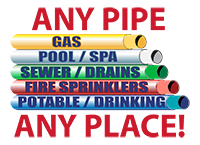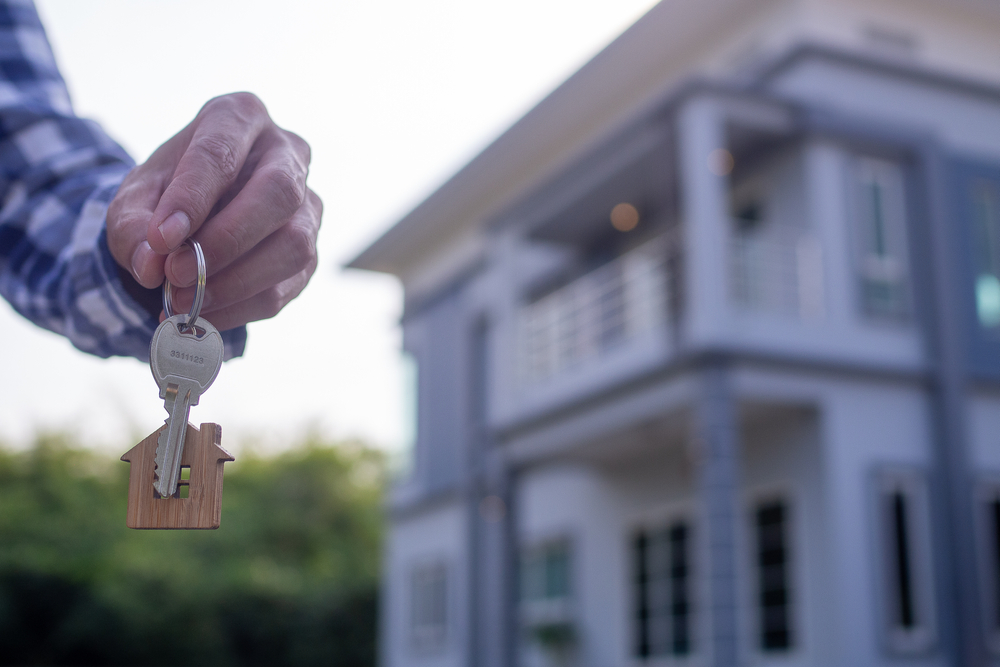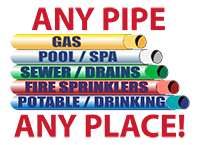Sewer line issues at your residential or commercial properties should be treated as soon as possible to prevent further damage and potential health hazards. Sewer line problems can cause wastewater backups, leaks, and flooding, which can damage your property and create an unsanitary environment.
Wastewater contains harmful bacteria and viruses that can pose health risks, including gastrointestinal illness, respiratory infections, and skin irritation. Additionally, sewage leaks can release dangerous gasses such as methane and hydrogen sulfide, which can be flammable and toxic.
Delaying repairs to sewer lines can also lead to more serious and costly problems, such as structural damage, foundation issues, and damage to nearby utilities. It’s important to address sewer line issues promptly to prevent these problems from occurring.
If you notice any signs of sewer line issues, such as:
- slow draining fixtures,
- foul odors, gurgling sounds,
- or standing water in your yard,
you should contact a professional plumber or sewer line specialist immediately to diagnose and repair the problem.
Early detection and repair can prevent further damage and help ensure the safety and health of your property and those who occupy it. Your plumber may recommend a trenchless pipelining if the conditions are favorable, we’ll discuss more about this option in the article.
What is Trenchless Pipelining?
Trenchless pipelining, also known as cured-in-place pipe (CIPP), is a method of repairing or rehabilitating existing underground pipes without the need for digging trenches or excavating the surrounding area.
The process involves inserting a liner made of a flexible, resin-coated material into the damaged pipe. The liner is then inflated and cured with hot water or steam, causing it to harden and conform to the shape of the original pipe. This creates a new, seamless pipe within the old one, eliminating the need for excavation and reducing the time and cost of repairs.
Trenchless pipelining is commonly used for repairing pipes in sewer, stormwater, and drinking water systems, as well as industrial and commercial applications. It is an environmentally-friendly solution that reduces disruption to the surrounding area and minimizes the risk of damage to existing infrastructure.
What we love about trenchless pipelining
Affordability
Trenchless pipelining can be a more affordable option for repairing damaged pipes compared to traditional excavation and replacement methods.
Trenchless pipelining is less disruptive and requires less labor, which can result in lower labor costs. The process is also faster, so there is less downtime and fewer disruptions to your daily routine. Additionally, trenchless pipelining is less invasive than excavation and replacement. Hence, there are fewer costs associated with repairing and restoring any damage to landscaping, hardscaping, or other property features.
However, the cost of trenchless pipelining can vary depending on several factors, such as the extent of the damage, the size and length of the pipes, and the accessibility of the pipes. It’s important to get a detailed cost estimate from a professional plumber or pipelining service to compare the costs of trenchless pipelining to traditional excavation and replacement methods.
Overall, trenchless pipelining can be a more affordable and cost-effective solution for repairing damaged pipes. But it’s also important to consider the specific circumstances of your situation and get professional advice to make an informed decision.
Labor Requirement
Trenchless pipelining is a non-invasive method of repairing or rehabilitating existing pipes without the need for digging trenches or excavating the surrounding area, thus reducing the time and labor required for repairs.
In contrast, traditional excavation and replacement methods involve digging trenches to access the damaged pipes, removing the old pipes, and installing new pipes. This process is much more labor-intensive and time-consuming, as it requires a significant amount of manual labor and heavy machinery to excavate and replace the pipes.
Convenience
In most cases, occupants do not need to leave their home while trenchless pipelining is taking place. Trenchless pipelining is a non-invasive method of repairing or rehabilitating existing pipes, so it typically causes minimal disruption to the surrounding environment and occupants of the property.
During the trenchless pipelining process, the plumbing system may need to be shut off temporarily to allow for the repair work. However, this is typically done in a way that minimizes inconvenience and disruption to the occupants of the property. The process of inserting the liner into the pipes usually takes only a few hours, and the curing process may take up to a day, depending on the specific materials and methods used.
Overall, while some minor inconveniences may be experienced during the trenchless pipelining process, occupants typically do not need to leave their home or experience significant disruption to their daily routine. It’s important to consult with a professional plumber or trenchless pipelining specialist to discuss the specific circumstances of your situation and any potential impacts on occupants or the property.
Effectiveness and Durability
Trenchless pipelining can be an effective and durable method of repairing or rehabilitating damaged pipes. Trenchless pipelining is designed to create a new, seamless pipe within the existing pipe, which can help to restore the structural integrity and improve the performance of the plumbing system.
The materials used in trenchless pipelining are designed to be durable and long-lasting. The liner material is typically made of a flexible, resin-coated material that can withstand a wide range of temperatures, pressures, and chemical exposures. The liner is also designed to resist corrosion, which can help to extend the lifespan of the repaired pipes.
In addition, trenchless pipelining can be an effective method of addressing a wide range of pipe problems, including cracks, leaks, root intrusion, and corrosion. By repairing these issues, trenchless pipelining can help to restore the flow of wastewater and prevent further damage to the plumbing system.
However, the effectiveness and durability of trenchless pipelining can depend on several factors, including:
- the quality of the materials used,
- the skill and experience of the installer,
- and the condition of the existing pipes.
It’s important to consult with a professional plumber or trenchless pipelining specialist to discuss the specific circumstances of your situation and determine if trenchless pipelining is the best solution for your needs.
Time Saving
If your home is in an urban setting, it’s only natural for you to want a sewer line issue to be fixed ASAP. If thats’s a primary concern, then trenchless pipelining might be the best option for you. It takes less time and than traditional excavation and the downtime associated is also negligible. Basically, you can expect huge results in very less time.
No Disruption to the Landscape
One of the benefits of trenchless pipelining is that it does not require excavation or digging. This means there is little to no disruption to the landscaping or hardscaping surrounding the property. This can be especially beneficial in urban or densely populated areas where excavation work can be difficult or impractical.
It is designed to be a low-impact, non-invasive method of repairing or rehabilitating damaged pipes. However, it’s important to consult with a professional plumber or trenchless pipelining specialist to discuss the specific circumstances of your situation and any potential impacts on the landscape or hardscaping. They can evaluate the specific situation and provide recommendations for the best course of action to address any plumbing issues while minimizing disruption to the surrounding environment.
No Stop on Business Activities
Trenchless pipelining can help to keep your business going during plumbing repairs or maintenance.
It is designed to be a quick and efficient method of repairing or rehabilitating damaged pipes, which means that the downtime required for repairs is significantly reduced. This can help to minimize disruptions to your business operations and allow you to continue serving your customers without significant interruption.
Because trenchless pipelining is a non-invasive method of repairing or rehabilitating pipes, it also minimizes disruptions to the surrounding environment. This can be especially beneficial for businesses located in urban or densely populated areas, where excavation work can be difficult or impractical.
Reduce Waste
Trenchless pipelining can result in a significant reduction in the amount of waste generated during the repair process as it eliminates the need for the old pipe to be removed and disposed of. This is in contrast to excavated soil, old pipes, and other materials created as waste in conventional pipelining. In a nutshell, trenchless pipelining can be a more environmentally friendly option for repairing or rehabilitating damaged pipes.
No root intrusion or leakage
Trenchless pipelining involves the insertion of a flexible liner into the damaged pipe and curing it in place to create a new, seamless pipe within the old one. This liner is made of a resin-coated material that is resistant to root intrusion and can help to prevent future root infiltration.
In addition, trenchless pipelining can also help to stop leaks in damaged pipes. The resin-coated liner is a strong and durable material that can seal off any cracks or holes in the damaged pipe. This is helpful in preventing leaks and restoring the structural integrity of the pipe.
Is trenchless pipelining right for you?
In case you’re considering trenchless pipelining as an option for repairing or rehabilitating your pipes, there are several factors to consider. These will help you decide if it’s the right choice for you. Here are some factors to keep in mind:
- Type and extent of damage: Trenchless pipelining is most effective for repairing pipes with moderate damage such as cracks, leaks, or corrosion. If the pipe is severely damaged or collapsed, excavation may be necessary. A professional plumber or pipelining service can evaluate the condition of your pipes and advise you on the best course of action.
- Age of the pipes: Trenchless pipelining is a good option for older pipes that may have multiple small leaks or cracks, rather than completely replacing them. However, if the pipes are very old and have multiple issues, it may be more cost-effective to replace them entirely.
- Accessibility: Trenchless pipelining requires access points to the existing pipes, so it may not be possible in all situations. The location and depth of the pipes, as well as any obstructions or bends in the pipes, can affect the feasibility of pipelining.
- Cost: While trenchless pipelining can be a cost-effective solution compared to excavation and replacement, it’s important to compare the costs of both options and evaluate the long-term benefits of each.
- Timeframe: Trenchless pipelining can be completed much faster than traditional excavation and replacement, so it may be a good option if you need a quick solution.
- Environmental concerns: Trenchless pipelining is a more environmentally-friendly option than excavation and replacement, as it requires less disruption to the surrounding area and produces less waste.
Choosing a Reliable Plumbing Service
Choosing a good plumbing service is important to ensure that your plumbing issues are resolved quickly and effectively.
- Look for licensed and insured plumbers: Make sure that the plumbing service you choose has licensed and insured plumbers. This will ensure that they have the necessary training and expertise to perform the job and that you are protected in case of any accidents or damages.
- Check their experience and reputation: Look for a plumbing service that has been in business for several years and has a good reputation in the community. You can check their online reviews and ratings on websites like Yelp, Google, or Angie’s List to get an idea of their reputation.
- Ask for referrals: Ask your friends, family, and neighbors for recommendations for good plumbing services they have used in the past. Referrals from people you trust can help you find a reliable and trustworthy plumbing service.
- Look for emergency services: Make sure that the plumbing service you choose offers emergency services and is available 24/7. This will ensure that you can get help when you need it, even outside of regular business hours.
By following these tips, you can choose a good plumbing service that will provide high-quality services and help you resolve your plumbing issues quickly and effectively. Ultimately, the decision to use a pipelining service depends on your specific situation and the factors mentioned above. A professional plumber or pipelining service can help you evaluate your options and make an informed decision.







